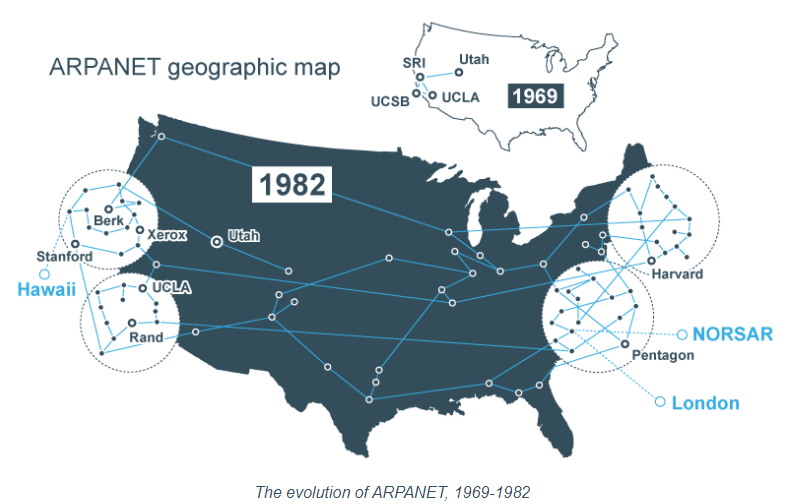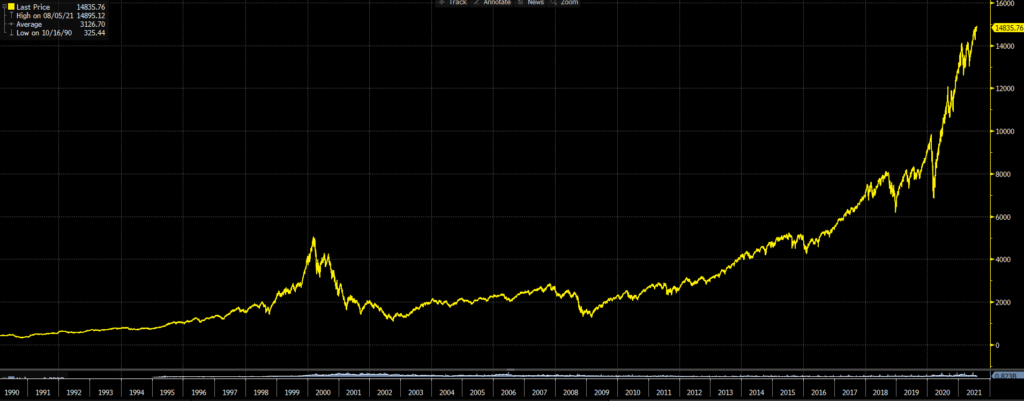The Wi-Fi in my apartment went out over the weekend, which provided an opportunity – whilst waiting through the Kafkaesque experience which is Optus customer service – to take time and reflect on how much we take the modern-day internet for granted. The internet is as entrenched and essential to our lives as food or shelter – there is a reason that the UN declared access to the internet is a human right back into 2016.
Many reading this note may remember a time before the internet, when the term “information superhighway” was used unironically and the most complicated pages out there were static text documents with some coloured text.
The evolution of what we now call the internet has been one of the most significant technological achievements in human history, impacting all facets of society and spawning multiple generations of industry titans and disruptors. We currently live amongst the “Web 2.0” era, a landscape of social connectivity and interoperability, and many are seeing the wave of “Web 3.0” approaching over the horizon.
In the first of a two-part series, today we will consider how we arrived into the Web 2.0 landscape, the history of both the internet and those companies/technologies which benefitted, and how we might be moving towards a new frontier of technology and capability within our lives.
Tomorrow, Mike will discuss what that frontier may look like and who is positioned to be the beneficiaries of that transition.
A Brief History of the Internet
As with many transformative technologies, the earliest stages of the internet were founded within a military project, the Advanced Research Projects Agency Network (ARPANET).
Funded by the U.S Defence Department in the last 1960s, ARPANET was the progenitor to the internet, with the purpose of linking all the Pentagon’s research offices via telephone lines.

Source: Portswigger
On January 1, 1983, nearly 20 years on from its first inception, ARPANET officially changed to IP standard language which we use to this day (hence the term IP address), and what we consider the internet today was born.
The first major wave of the internet was known as “Web 1.0”, which operated on the back of hyperlinks joining static web pages. Web 1.0 was largely like reading a “read only” PDF, plain text with no interactivity besides going to other non-interactive pages.
This was a passive stage of the internet, there was little-to-no user engagement and thereby little-to-no user monetization, people logged in to read text and then take that information back to the physical world to action.
That lack of intractability, where there was no real online ecosystem where digital information could be actioned only in the physical world, is the real differentiation between the old internet and today’s internet, and marks the real fulcrum which led us into Web 2.0.
Web 2.0: The Internet of “Networks”
Web 2.0 is best summarised as the network of user-made content, allowing greater interactivity between the site and end-users, and creating an ecosystem in which activity and interest can be more efficiently bridged between the virtual and physical world.
Web 2.0 encapsulates the interoperability between the internet and our physical day-to-day processes – through linkages between our computers, phone, TV’s and cars.
The first major players in this space were platforms and services which allowed for the sharing of content; WordPress, Netscape, Myspace, these sites formed the foundation with which the current FAANG stocks now stand upon.
Since this has been a period of rising popularity/capability of web applications, where Web 2.0 was the birthing ground of Software-as-a-Service (SaaS) companies, leveraging these applications to provide services and collect user data (further enabled by this inter-user interaction).
If there was a thesis behind the shift to Web 2.0, it was attempting to best recreate some of the experiences of the physical world into the virtual; talking and participating online, writing online, learning online and – most importantly – spending online.
Facebook (FB: NASDAQ), Amazon (AMZN: NASDAQ)and Google (GOOGL: NASDAQ) are the giants of Web 2.0 who took the user-content connectivity and found ways to monetize it. In fact, you can almost pinpoint the period of time where Web 2.0 successfully began to monetize the internet with the start of the bull market in the NASDAQ.

Source: Bloomberg
The Next Generation
Those investors who identified the turn of Web 2.0 and the potential winners have done very well for themselves. There were many players to be identified in the shift, and you didn’t have to pick them all – an early investment into any one of the FAANGs would be serving a portfolio well to this day.
So, what will the shift to Web 3.0 look like, and who will be the winners?
Will it be a focus on data ownership and privacy, creating new freedoms for users and stripping the Web 2.0 old guard of some of their assets?
Will it be the logical progression from bridging the physical and digital world, looking to create a web ecosystem where your funds and business need never leave the cloud in favour of blockchain technology and cryptocurrency compatibility?
As we did in the early 2000s, we may be standing at the precipice of one of the largest-scale disruptions to the way we live, interact and spend our money in modern history. This would be, in turn, one of the largest-scale investment opportunities – those “once in a lifetime” trades, which seem to actually pop up every decade or so.
The views expressed in this article are the views of the stated author as at the date published and are subject to change based on markets and other conditions. Past performance is not a reliable indicator of future performance. Mason Stevens is only providing general advice in providing this information. You should consider this information, along with all your other investments and strategies when assessing the appropriateness of the information to your individual circumstances. Mason Stevens and its associates and their respective directors and other staff each declare that they may hold interests in securities and/or earn fees or other benefits from transactions arising as a result of information contained in this article.



